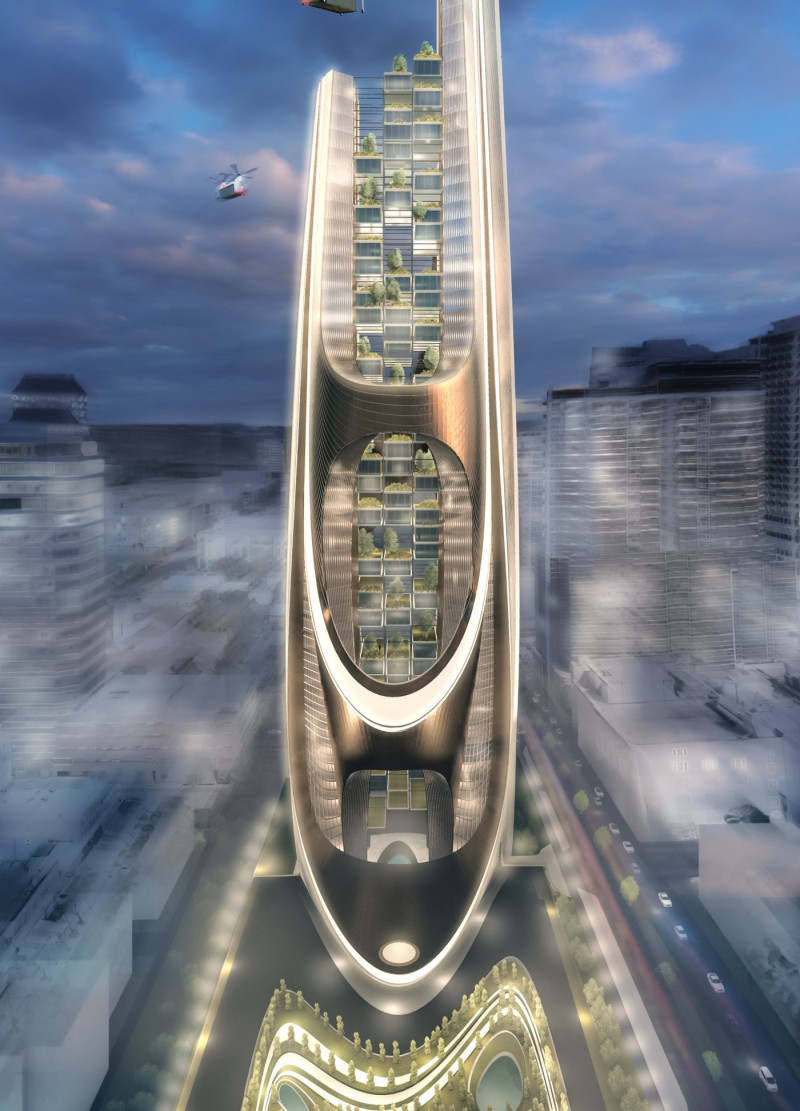5 key facts about this project
The design incorporates residential units, co-working offices, and communal facilities to create a multifaceted living environment. The architectural form is characterized by elongated silhouettes that facilitate light penetration and offer expansive views of the surrounding urban landscape. This approach allows the skyscraper to contribute to the identity of the area while also serving the needs of its inhabitants.
Adaptive Use of Space
A key feature of the Noma.Topia Skyscraper is its modular design, which facilitates adaptability in both living and working arrangements. This flexibility accommodates changing demographics and lifestyle requirements, allowing for layouts that can easily be modified based on individual preferences. The building includes various configurations of housing and office spaces, enabling residents to seamlessly transition between work and leisure without changing their environment.
Sustainable Design Initiatives
The project prioritizes sustainability by integrating green roofs, solar panels, and rainwater collection systems into its design. The use of eco-friendly materials, such as glass, metal, and reinforced concrete, ensures that the structure meets modern standards of energy efficiency and environmental performance. The incorporation of vegetation in the form of sky gardens promotes biodiversity and enhances the urban habitat, contributing to the well-being of residents.
Community and Connectivity
The Noma.Topia Skyscraper emphasizes community engagement through its design. Facilities such as communal lounges, recreational areas, and executive offices are strategically placed to encourage interaction among users. Sky gardens serve as both recreational spaces and micro-ecosystems, promoting mental health and providing a green respite from urban life. The internal layout prioritizes communal pathways and gathering spaces, fostering a sense of belonging within the vertical structure.
For further information, explore the architectural plans, sections, and designs that detail the thoughtful approaches behind the Noma.Topia Skyscraper. Understanding these architectural ideas will provide deeper insights into the unique objectives and methodologies that define this project.























